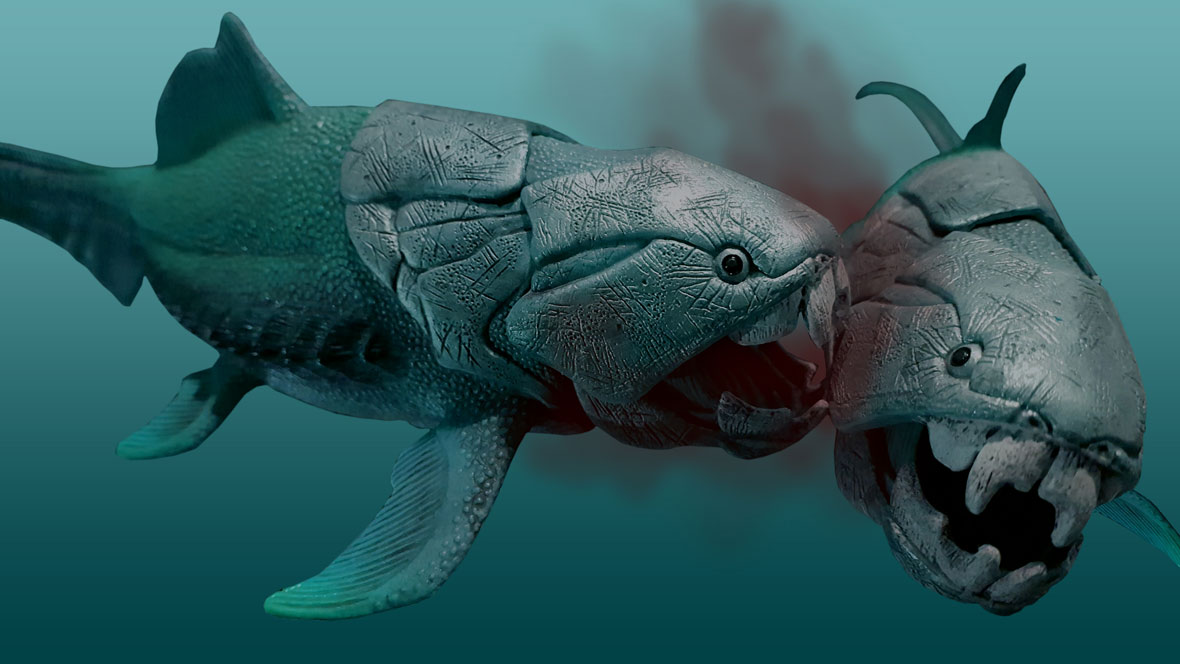When we think of prehistoric creatures, our minds often drift to the towering dinosaurs that roamed the land. However, beneath the waves, a different kind of predator ruled the ancient seas. Prehistoric aquatic predators, with their unique adaptations and formidable hunting strategies, were the apex predators of their time. These captivating creatures not only shaped marine life but also played a significant role in the evolution of modern aquatic species. As we dive into the depths of history, we uncover the fascinating stories of these ancient hunters.
The oceans of the prehistoric era were teeming with life, and among this vibrant tapestry were some of the most fearsome predators ever to inhabit the Earth. Imagine the thrill of witnessing a giant mosasaur glide through the water or the sheer terror of encountering a megalodon lurking beneath the surface. These creatures were not just monsters; they were marvels of evolution, perfectly adapted to their environments and equipped for survival in a world fraught with challenges. Understanding their roles in the ecosystem helps us appreciate the complexity and interconnectedness of life on our planet.
In this article, we will explore the diverse range of prehistoric aquatic predators, their characteristics, and the impact they had on their ecosystems. We will delve into questions about their hunting techniques, physical adaptations, and how they compare to modern-day predators. By examining these ancient beings, we not only gain insight into the past but also a greater understanding of the ongoing evolution of marine life today.
What Were the Most Notable Prehistoric Aquatic Predators?
Throughout Earth's history, various prehistoric aquatic predators have emerged, each with its unique traits and adaptations. Some of the most notable include:
- Megalodon: An enormous shark that could reach lengths of up to 60 feet, known for its massive jaws and serrated teeth.
- Mosasaur: A large marine reptile that resembled a modern-day crocodile, capable of swift swimming and powerful bites.
- Plesiosaur: Recognized by its long neck and large body, this predator was adept at catching fish and other marine creatures.
- Ichthyosaur: A dolphin-like reptile that ruled the oceans during the Mesozoic era, known for its speed and agility.
How Did Prehistoric Aquatic Predators Evolve?
The evolution of prehistoric aquatic predators is a tale of adaptation and survival. As the Earth's climate and oceans changed, these creatures evolved various strategies to thrive in their environments. Some key evolutionary adaptations include:
- Efficient swimming: Many aquatic predators developed streamlined bodies, allowing them to move swiftly through the water.
- Advanced sensory systems: Enhanced eyesight and acute hearing enabled them to detect prey from great distances.
- Powerful jaws: Adaptations in jaw structure allowed for a stronger bite, making it easier to capture and consume prey.
What Did Prehistoric Aquatic Predators Eat?
The diets of prehistoric aquatic predators were as diverse as the creatures themselves. Some of the primary food sources included:
- Fish: The most common prey for many aquatic predators, providing a primary source of sustenance.
- Marine reptiles: Larger predators like the mosasaur often preyed on smaller marine reptiles, establishing a complex food web.
- Cephalopods: Squid and octopus-like creatures were also part of the diet for some predators, showcasing their adaptability.
How Did Environmental Changes Impact Prehistoric Aquatic Predators?
Environmental changes throughout history had a significant impact on prehistoric aquatic predators. Factors such as climate shifts, rising sea levels, and geological events contributed to the evolution and extinction of various species. For instance:
- Mass extinctions: Events like the Cretaceous-Paleogene extinction led to the decline of many marine reptiles.
- Habitat changes: Changes in ocean temperatures and salinity affected the distribution of prey, influencing predator behavior.
- Competition: The emergence of new predators and competitors often led to shifts in feeding strategies and adaptations.
What Can We Learn from Prehistoric Aquatic Predators?
Studying prehistoric aquatic predators provides valuable insights into the history of life on Earth. Their adaptations and behaviors can inform our understanding of current marine ecosystems and conservation efforts. Key lessons include:
- Adaptability: The ability to adapt to changing environments is crucial for survival, a lesson that remains relevant for modern species.
- Interconnectedness: The complex relationships between predators and prey highlight the importance of biodiversity in maintaining healthy ecosystems.
- Extinction awareness: Understanding the factors that led to the extinction of prehistoric predators can help us mitigate similar risks for endangered species today.
Are There Modern Descendants of Prehistoric Aquatic Predators?
Many modern marine species are considered distant relatives of prehistoric aquatic predators. For example:
- Sharks: Modern sharks share a common ancestry with the ancient megalodon, showcasing a lineage that has persisted for millions of years.
- Crocodiles: These reptiles are closely related to ancient marine predators like the mosasaur, sharing similar adaptations for aquatic life.
- Ray-finned fishes: Many fish species today have evolved from ancestors that thrived alongside prehistoric predators.
Conclusion: The Legacy of Prehistoric Aquatic Predators
Prehistoric aquatic predators hold a fascinating place in the tapestry of life on Earth. Their unique adaptations, hunting strategies, and evolutionary journeys offer a glimpse into a world long gone but not forgotten. As we continue to study and learn from these ancient creatures, we gain a deeper appreciation for the complexity of marine ecosystems and the importance of conservation efforts to protect our oceans. Understanding the legacy of prehistoric aquatic predators not only enriches our knowledge of the past but also guides us in safeguarding the future of aquatic life.


